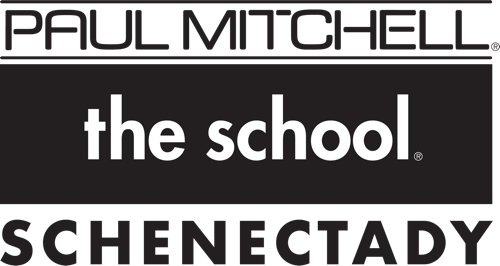Cosmetology Course Description
COSMETOLOGY: Standard Occupational Classification (SOC) 39-5012.00,
Classification of Instructional Programs (CIP) Code 12.0401
The curriculum involves 1000 hours to satisfy New York state requirements. The course includes extensive instruction and practical experience in cutting, hair coloring, perming, customer service, personal appearance and hygiene, personal motivation and development, retail skills, client record keeping, business ethics, sanitation, state laws and regulations, salon-type administration, and job interviewing.
Cosmetology Course Overview
Course Hours: 1000 clock hours
The course is divided into pre-clinical classroom instruction and clinical service learning experiences.
- Pre-clinical Classroom Instruction: The hours are devoted to classroom workshops where students learn design principles, technical information, and professional practices.
- Clinic Classroom Learning Experience: The remaining hours are spent in the clinic classroom area where practical experience is gained.
Cosmetology Course Outline
Your time at Paul Mitchell The School Schenectady for the cosmetology program will be divided into five designations:
- Core Curriculum: A multi-week pre clinical orientation, known as the CORE program, instills the basic fundamentals. Students are graded and evaluated using written, oral and practical testing methods. Students must successfully complete the Core Curriculum prior to attending regularly scheduled daily classes in cutting, coloring, permanent waving and chemical texture services.
- Clinic Classroom Experience: Your learning process will be guided with individual attention and group learning experiences, where workshops, clinic classroom worksheets and periodic evaluations developed specifically for this monitoring progress. This is when you begin experiencing your clinic classroom education on paying clients in the clinic classroom area.
- Classroom Learning: Your time in the classroom is divided into four areas. Each of these areas has a licensed instructor who conducts the different specialty classes each week. Classroom Learning Experiences may also include retail, motivation, self improvement, professional development, and attendance education.
- Adaptive Curriculum: You will enter a new phase of specialty classroom workshops coupled with challenging practical services that will continue to build you into a beauty industry professional.
- Creative Curriculum: You will spend your remaining hours in Paul Mitchell The School Schenectady in “high gear” by dressing, acting and working like a beauty industry professional. You will use your own artistic and creative abilities, coupled with the assistance of the Learning Leaders, to prepare yourself for your future beauty industry career. You must be up to date on all theory tests and worksheets to be considered a “Creative Future Professional” and added to the creative schedule. Creative Schedules begin during the first week of the month.
COSMETOLOGY COURSE SUBJECTS
The instructional program of Paul Mitchell The School Schenectady meets or exceeds the state requirements:
| Requirements | Total Clock Hours |
|---|---|
|
Professional Requirements
|
24 |
|
Safety and Health
|
26 |
|
Anatomy and Physiology
|
15 |
|
Hair Analysis
|
10 |
|
Hair and Scalp Disorders and Diseases
|
10 |
|
Chemistry as applied to Cosmetology
|
5 |
|
Shampoos, Rinses, Conditioners and Treatments
|
30 |
|
Haircutting and Shaping
|
175 |
|
Hairstyling
|
245 |
|
Chemical Restructuring
|
180 |
|
Hair Coloring and Lightening
|
180 |
|
Nail Care and Procedures
|
40 |
|
Skin Care and Procedures
|
60 |
| Hours required by NYS Regulations | 1000 |
The institution offers employment assistance to help graduates’ efforts to secure education-related employment that includes, but is not limited to training in professionalism, resume’ development, job interview preparation and job search skills.
Cosmetology program testing and grading Procedure
The following tests and grading procedures are used to assess student learning and mastery of course content in the 1000-hour course:
- Academic theory exams: Students must receive a grade of 80% or higher on each assigned theory exam.
- Orientation practical skill evaluation test: Students must receive a grade of 80% or higher on each written exam and each practical skill exam in order to complete the Core program. The exams are an overview of instruction taught during the Core schedule. All Core written and practical skill exams must be passed with a 80% in order to transition to the Clinic Classroom. If students are unable to pass each exam after two attempts, the student may be asked to withdraw from the program and re-enroll in the next available Core class start date.
- Final exam 1: This test covers an overview of all related cosmetology subjects (e.g., anatomy, chemistry, etc.). Students must receive a grade of 80% or higher on all final exams.
- Final exam 2: The written exam covers an overview of all theory instruction, New York state law, and other items covered on the state cosmetology exam. Students must receive a grade of 80% or higher on all final exams.
- Practical clinic classroom worksheets: Students must complete all assigned practical clinic classroom worksheets.
